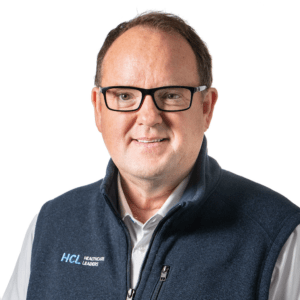The current state of EMRs in LTC settings
Long-term care (LTC) requires hands-on support and care from frontline workers—the human element in caring for a frail, aged population. While the important role of these frontline workers will never be replaced by technology, the application of health information technology (HIT) increasingly is helping caregivers provide quality care and deliver positive outcomes. As providers take a more expansive view of HIT beyond automated charting and the elimination of paperwork, they are beginning to see HIT and, more specifically, electronic medical records (EMRs) as tools to summarize trends in a patient’s care, improve provider decision making, decrease errors, monitor the application of evidence-based disease protocols and, ultimately, improve quality and safety. The goal is to improve patient and disease management, not just records management.
The interesting dichotomy in the adoption of HIT for LTC settings is that efforts across the entire healthcare spectrum to install HIT systems cite improved quality as a primary reason for moving forward. Yet long-term care, which has had a decade-long industry-wide commitment to quality, has made significant achievements without adopting HIT. Increasingly, however, there is a belief among healthcare experts that further leaps in LTC quality and efficiency may only be achieved through HIT solutions.
Clinical and Operational Benefits
A 2005 study by Rainu Kaushal, MD, MPH, and colleagues from Brigham and Women’s Hospital in Boston, entitled “Functional Gaps in Attaining a National Health Information Network,” estimated that the adoption of EMRs in skilled nursing facilities (SNFs) is only about 1%, which significantly lags behind hospitals’ 18% penetration rate. Yet a case can and should be made that it is nursing homes that can benefit more from the implementation of EMRs and it is they that should be the early adopters. Unlike hospitals that typically focus on unique episodes of care for people of all ages, nursing home residents are typically older and frail, and 50% of residents stay at least one year and 21% remain for five years. The extended stays, coupled with the realization that the average SNF resident receives six to seven medications per day to address multiple chronic conditions, suggest that an EMR will better prevent harmful drug interactions, track assessments, and monitor clinical outcomes than current methods.
Operationally, an EMR that also tracks billings and reimbursements can improve and streamline regulatory compliance, reduce and eliminate paperwork redundancies, improve charge capture, and reduce time spent charting. The opportunity to marry operational improvements in back-office functions with evidence-based protocols for caregiving presents a wonderful opportunity to dramatically improve how SNFs function. By improving efficiencies in paperwork and increasing knowledge about the resident’s condition, EMRs free frontline caregivers to do what they have been trained to do and what they want to do: provide care.
EMRs Developed Exclusively for LTC Settings
Providers investigating the implementation of EMRs should retain one fundamental but obvious consideration that is often overlooked: LTC settings are very different from hospitals and physicians’ offices. The staffing ratios, different care management assessments and systems, staff training, and regulatory and reimbursement requirements of LTC facilities are all substantially different. An EMR developed for an acute or ambulatory care setting will have very different functionality from one developed for LTC settings and may not be adequately converted to LTC use. When exploring HIT and EMR systems, consider those developed exclusively for the clinical and operational needs of LTC settings.
Because LTC is by and large low tech, custodial care, paper, and manual functions have dominated the careers of most clinicians. Introducing HIT will replace entrenched care techniques and require planning and sensitivity to manage the culture change. Creating employee buy-in and shared learning among all levels of clinicians and administrators on each shift will facilitate EMR adoption and maximize its value. The following steps have been shown to help achieve these goals:
Perform a facility-wide workflow assessment to understand the needs, policies, and procedures from the perspective of the nurses, physicians, certified nursing assistants (CNAs), and administrators before implementation.
Create an on-site training center that provides hands-on experience with equipment and competency testing.
Establish a group of dedicated, highly trained “super-users” comprising facility administrators and department managers who will be able to support and train other users beyond the initial and periodic vendor-supplied training.
Undertake an internal marketing and change-management campaign to get employees excited about the change.
Point-of-Care Entry and Data Synchronization
To maximize the benefits of an EMR, the system must collect and dispense information at the point of care (POC). Failure to do so requires the continued use of paper records until information can be entered at a fixed computer station, negating efficiencies and increasing the potential for error. The availability and lower costs of rugged laptops, tablet computers, and handheld portable digital assistants (PDAs) support the mobile nature of clinical staff, and they can be sterilized for infection control purposes.
Instantaneous software response time is necessary to encourage adoption and utilization by clinicians. A slow system or one that does not have the most recent data will result in decreased utilization and the eventual failure of the EMR. Moreover, the system must automatically synchronize to:
guarantee that the most accurate data are available to clinicians; and
avoid serious safety issues that can occur if a user forgets to upload resident information to a central data source.
The benefits of data entry at the POC and real-time information-sharing are further enhanced through the use of a single data source to house the necessary patient information. A single data source at a secure off-site central data center guarantees each user is accessing the most current information, eliminates data omission that can occur if multiple data sources do not properly sync, and makes protecting patient information easier.
Safeguarding protected health information (PHI) while using an EMR both within the facility and from remote sources is another important consideration. Because some EMR systems store patient data on PDAs and laptops before synchronizing with the central database, there is a risk that patient data may be vulnerable, especially if those mobile devices are lost or stolen. Reports in the media about lost laptops with Social Security numbers and the increasing number of cases of identity theft underscore the importance of this real threat. Technology exists that can mitigate this risk and does not involve storing PHI on mobile devices. Called application service providers (ASPs), these EMR systems share information with mobile devices using secure real-time transactions, thus eliminating the need for data synchronization since no patient data are stored on the devices.
Cost Considerations
A recent study by the California HealthCare Foundation found that the greatest barrier to implementing HIT solutions is a lack of capital resources to invest in the necessary equipment, training, and maintenance. Vendors must be able to provide facilities price certainty so no surprises or hidden costs derail a project or limit a product’s use. To help mitigate costs and avoid investing large sums in facility-based data servers and IT equipment, purchasers should investigate ASP models as the best approach to avoid these costs. When selecting an EMR vendor with an ASP model, it is important for the vendor to have leading-edge technology with redundant systems.
Redundancy is required in power, hardware, and networking components at the data center hosting the ASP system. At the nursing home, redundancy is also required in power, such as a backup generator, and networking, such as a failover T1 line for persistent Internet broadband access. Even if networking redundancy fails, the nursing home still needs to operate a 24/7 facility. Therefore, the EMR vendor should support the ability to store updated “mission-critical” clinical data for residents locally at the nursing home. This fail-safe system provides the cost benefits of a hosted ASP model, along with the peace of mind of a locally hosted application.
An ASP-hosted system must also be fast to the end user. EMR applications designed to operate over the Internet must be developed with compact and efficient transactions to optimize the size and quantity of information flowing between the mobile computer or device and the secure data center. A well-designed ASP mobile EMR system should operate very well even on a smartphone over a non-broadband Internet connection provided by a cellular network.
In addition to the costs for initial installation and training, facilities will need to have access to live telephone and Internet support 24/7/365 to ensure issues can be immediately addressed and patient care maintained. A fixed-fee monthly contract is a beneficial way to ensure access to these services and to effectively manage the on-going costs of the system.
Conclusion
The cost of poor care cannot always be recouped. It can affect patients in a variety of ways—from temporary setbacks in rehabilitation to inconsistent and incorrect treatment regimens or even worse. Poor care can also create unnecessary burdens and extra work for clinicians and administrators, adversely affect staff retention rates, and contribute to fines and other official sanctions.
Implementing a health information infrastructure that supports an EMR system can have exceptional clinical and operational benefits in LTC settings. Before the nursing home selects an EMR vendor, the first step involves examining the current problems or inefficiencies in the facility. After an honest examination of the current landscape in the home, realistic goals can be established. Those goals can then be leveraged to develop a requirements list for an EMR vendor. By fully examining the information technology solutions available in the marketplace, the nursing home should select an EMR vendor with the best mobile technology, functionality, and commitment to service to ensure optimum user adoption of the technology. Only with maximum ongoing adoption of the system by all departments and disciplines within the facility will your nursing home be able to achieve its goals for improved clinical and financial outcomes.
Steve Pacicco is CEO of SigmaCare/eHealth Solutions, Inc. Pacicco previously was Executive Vice-President at Amicore, an ambulatory electronic medical record company. He also worked for 11 years at Pfizer in the U.S. Pharmaceutical’s Strategic Planning and Business Development group, where he was responsible for determining the impact on pharmaceutical research and development, marketing, and sales from the emerging trends in healthcare technology, such as electronic medical records and electronic prescribing.
For more information, phone (877) 432-5858 or visit https://www.sigmacare.com. To send your comments to the author and editors, e-mail pacicco0208@nursinghomesmagazine.com.
I Advance Senior Care is the industry-leading source for practical, in-depth, business-building, and resident care information for owners, executives, administrators, and directors of nursing at assisted living communities, skilled nursing facilities, post-acute facilities, and continuing care retirement communities. The I Advance Senior Care editorial team and industry experts provide market analysis, strategic direction, policy commentary, clinical best-practices, business management, and technology breakthroughs.
I Advance Senior Care is part of the Institute for the Advancement of Senior Care and published by Plain-English Health Care.
Related Articles
Topics: Articles , Technology & IT











